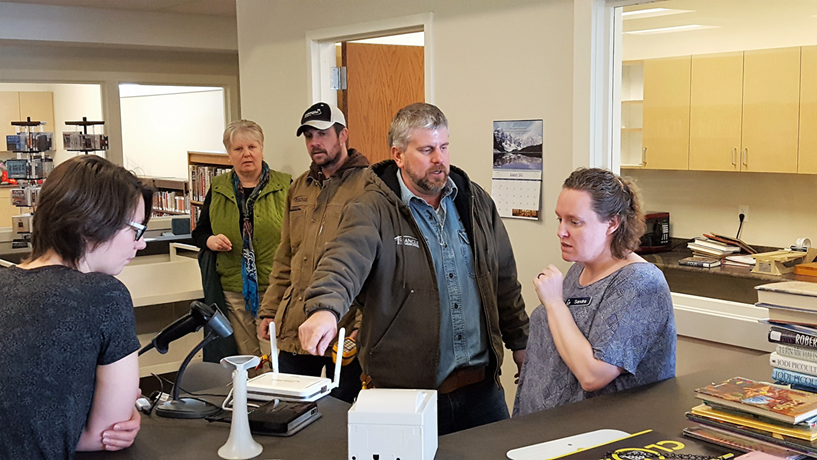By Joshua Seidemann, Vice President of Policy, NTCA–The Rural Broadband Association
If you read popular DC press, you might be concerned about the prospects for rural America. An article published earlier this week notes that rural America suffers from higher poverty rates, lower education rates and disproportionate rates of early death than urban areas. The article digs deeper, listing a series of chronic medical conditions such as obesity, mental health, cancer and diabetes that are more prevalent in rural areas than urban. And, it warns that your job is more susceptible to replacement by AI than if you are employed in an urban area.
For better or for worse, many of the trends described in the article are not news. NTCA has explored these issues in Federal Communications Commission (FCC) filings and research papers. Those documents have taken a frank and unvarnished look at the challenges facing rural America. But they have also illuminated opportunities and gains that can be made with creative, forward-thinking grit, gumption and a refusal to give in. And, of course, broadband.
At the outset, it is important to note that there is no silver bullet for rural America. Nor is there a silver bullet for urban cores that suffer from high rates of poverty, violent crime and unemployment. Successful strategies must address head-on the challenges that both face. And, those strategies (also as have discussed previously) contemplate silver buckshot – a menu of options to be tailored to the individual needs of each individual region or community. A popular phrase encapsulates the proposition that there is no single “rural America:” “If you’ve seen one rural area, you’ve seen one rural area.” There is no uniform solution. But there can be a collective strategy.
There is no uniform solution. But there can be a collective strategy.
Rural health care is difficult. Rural areas comprise about 25% of the U.S. population but are home to only about 10% of the nation’s physicians; there is a shortage of specialists, checking in at 70% fewer per 100,000 people in rural areas than urban. And, yet, telemedicine can conquer distance and disease. An NTCA Smart Rural Community paper found annual savings in lost wages, travel time and hospital costs of nearly $30,000 per facility annually and increased local lab and pharmacy revenues ranging from $11,000-$45,000 when telemedicine is deployed.
Educational attainment? A recent NTCA paper pointed to data demonstrating that in 1950, 56% of rural adults lacked a high school diploma. In 2015, that number plummeted to 15%. At the same time, nearly 30% of rural adults now hold a bachelor’s degree or higher.
Job loss? No doubt, robots and AI will change the face of the job market. But middle skills and STEM jobs are increasing steadily and programs in advanced manufacturing are sponsored in more than 30 states across the country. At bottom, there are some jobs that cannot be outsourced or automated (yes, we’ve covered that here, too). So, while educators and industry must create a game plan to meet the next generation of jobs, it means pivoting, rather than taking a knee.
If you’re ready to tell the rest of the rural (smart) story, this is the time.
If you identified broadband as a common thread running through telemedicine, education and job training, then you’re ready to help tell the rest of the rural (smart) story. Here are just a few, culled from Smart Rural Community Showcase award recipients:
- Vernon Communications Cooperative (Westby, Wisc.) supports a grain storage facility of an international food-processing and commodities trading corporation which processes five to six million bushels of corn, soybeans and soft red winter wheat every year. Approximately 180-200 local farmers can spot sell, store or contract their grain. Cloud software maintains employee time cards, vehicle log books and customer databases. Reliable broadband also enables farmers (and the company) monitor fluctuating grain prices, communicate the daily closing bid with customers through text message or email, and maintain real-time communication with headquarters through video conferencing and private chat lines.
- Rainbow Communications (Hiawatha, Kan.) demonstrates the unique complementary properties of various fixed and mobile broadband platforms. The company provides fixed fiber connectivity to Highland Community College, the oldest college in the state, enabling the college to offer numerous courses at various sites. These courses include CTE courses as well as training in precision agriculture, which relies upon mobile broadband applications, and diesel mechanics; similar to the complementary properties of fixed and mobile broadband services, both educational components are necessary as farms rely increasingly on traditional mechanical equipment as well as evolving analytical tech and mobile guided systems.
- Webster-Calhoun Cooperative Telephone Association (Fort Dodge, Iowa) provides broadband that enables local high school students to earn college credits through distance education. Students can take up to 23 credits of college courses through a partnership with Iowa Central Community College.
If you’re ready to tell the rest of the rural (smart) story, this is the time. August is Smart Month at NTCA. We’re telling smart stories; help us tell yours.
And, one more piece of the puzzle: regional collaboration (covered in NTCA’s “Steel Sharpens Steel”): Rural populations are indeed shifting; many rural spaces are becoming increasingly tied to expanding urban areas, while data indicate that remote rural regions face more formidable challenges. As noted above, there is no silver bullet. But the strategic menu should find rural communities exploring regional collaboration for everything from economic development to education. Chances are, regions are already coordinating to support health care and public safety infrastructure. Similar models can be explored for other applications.
Are there challenges in rural America? Absolutely, yes. But, resilience, determination and perseverance have never been far from rural minds.
And when blended with broadband . . . well, that can be the smartest thing yet.


